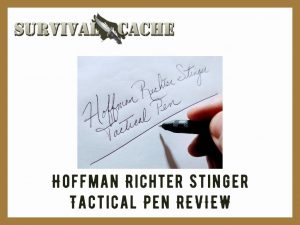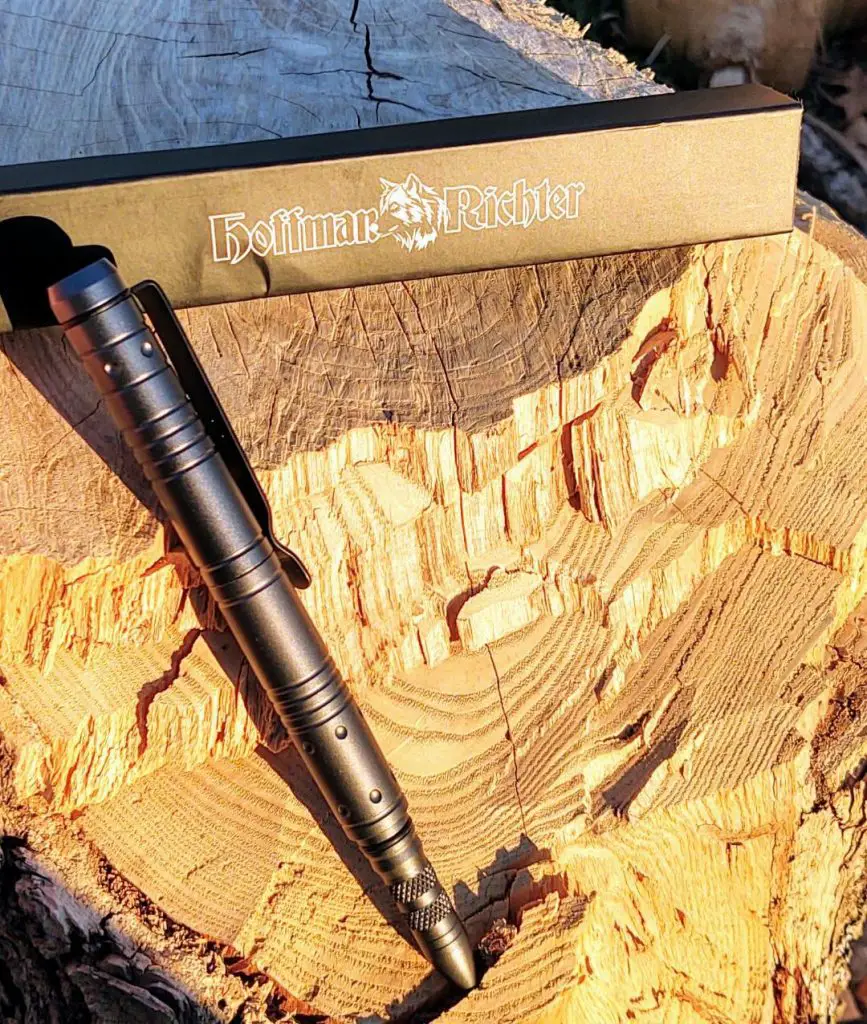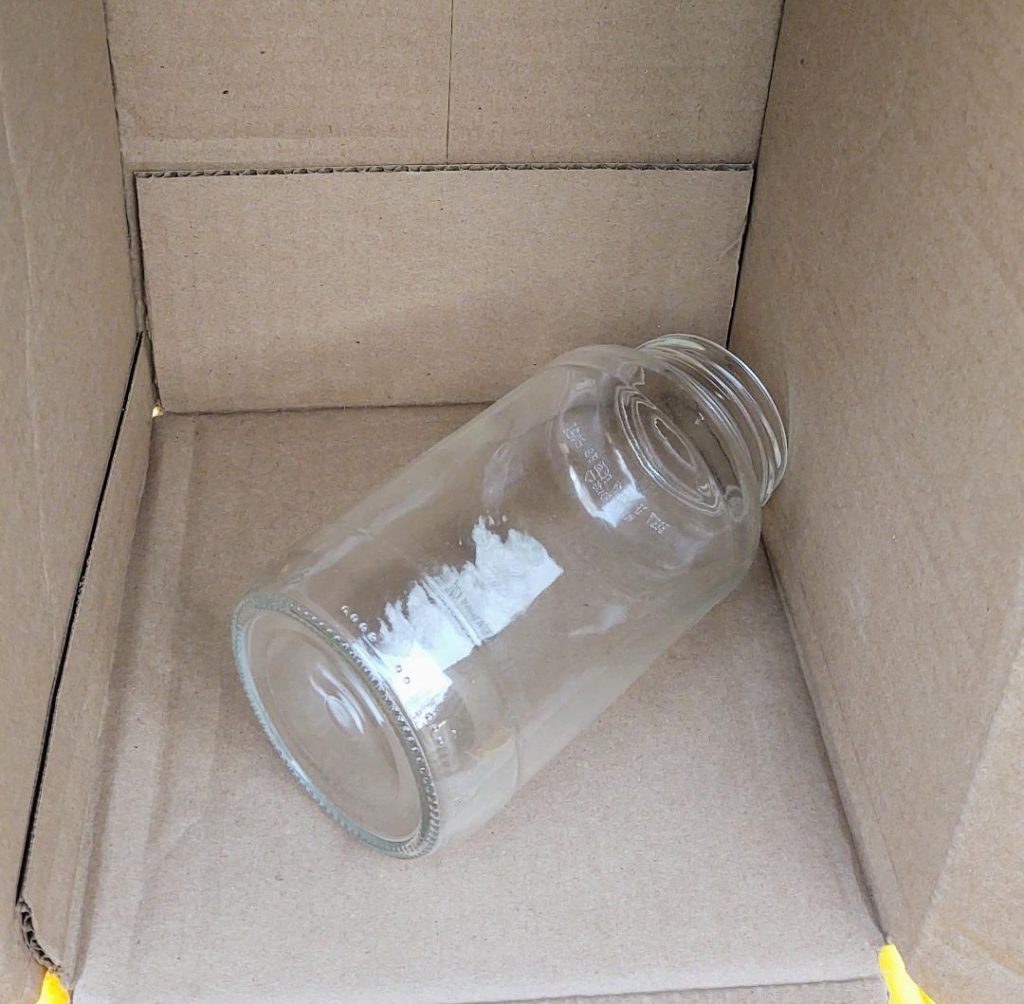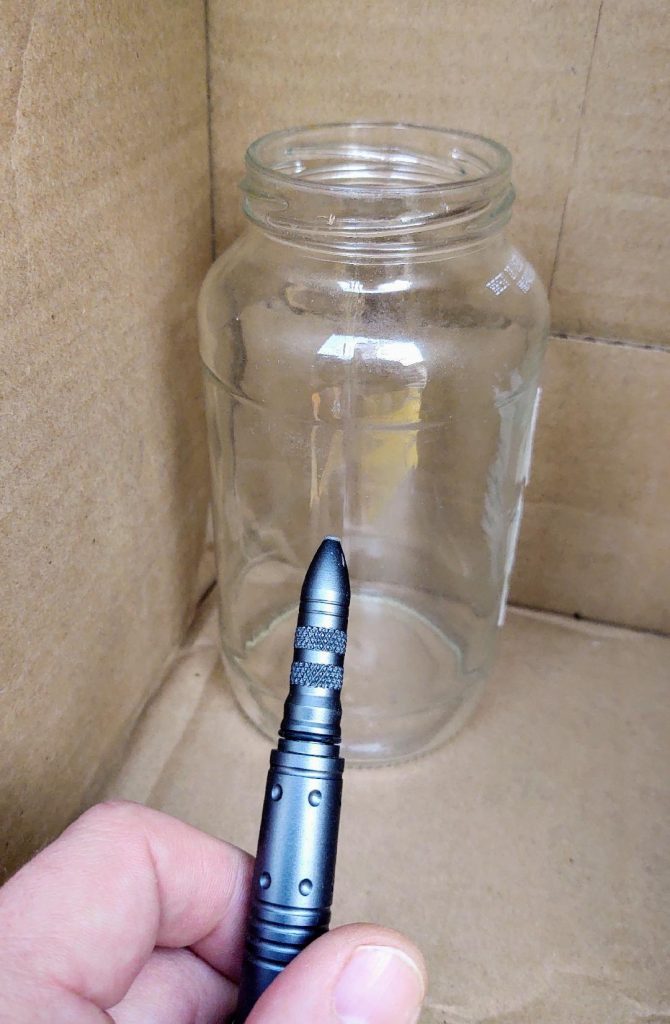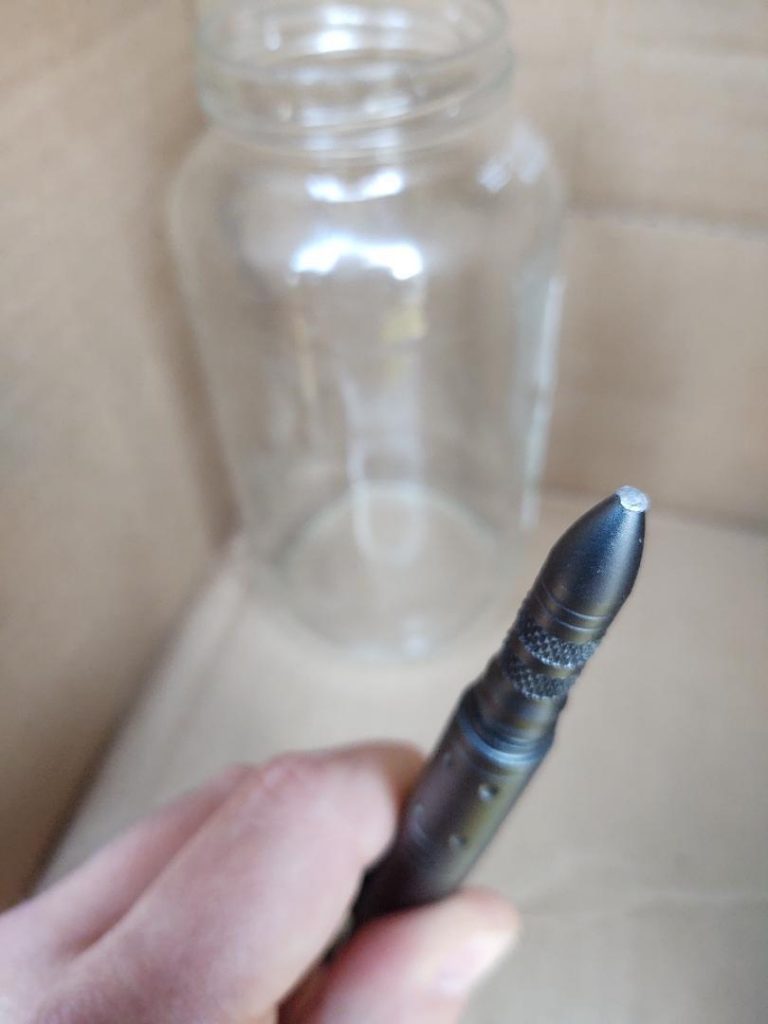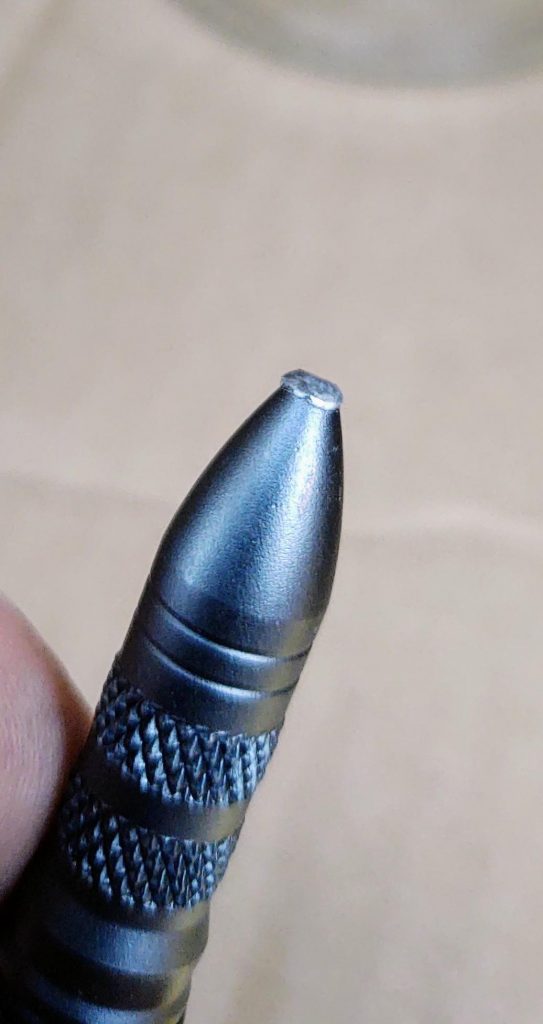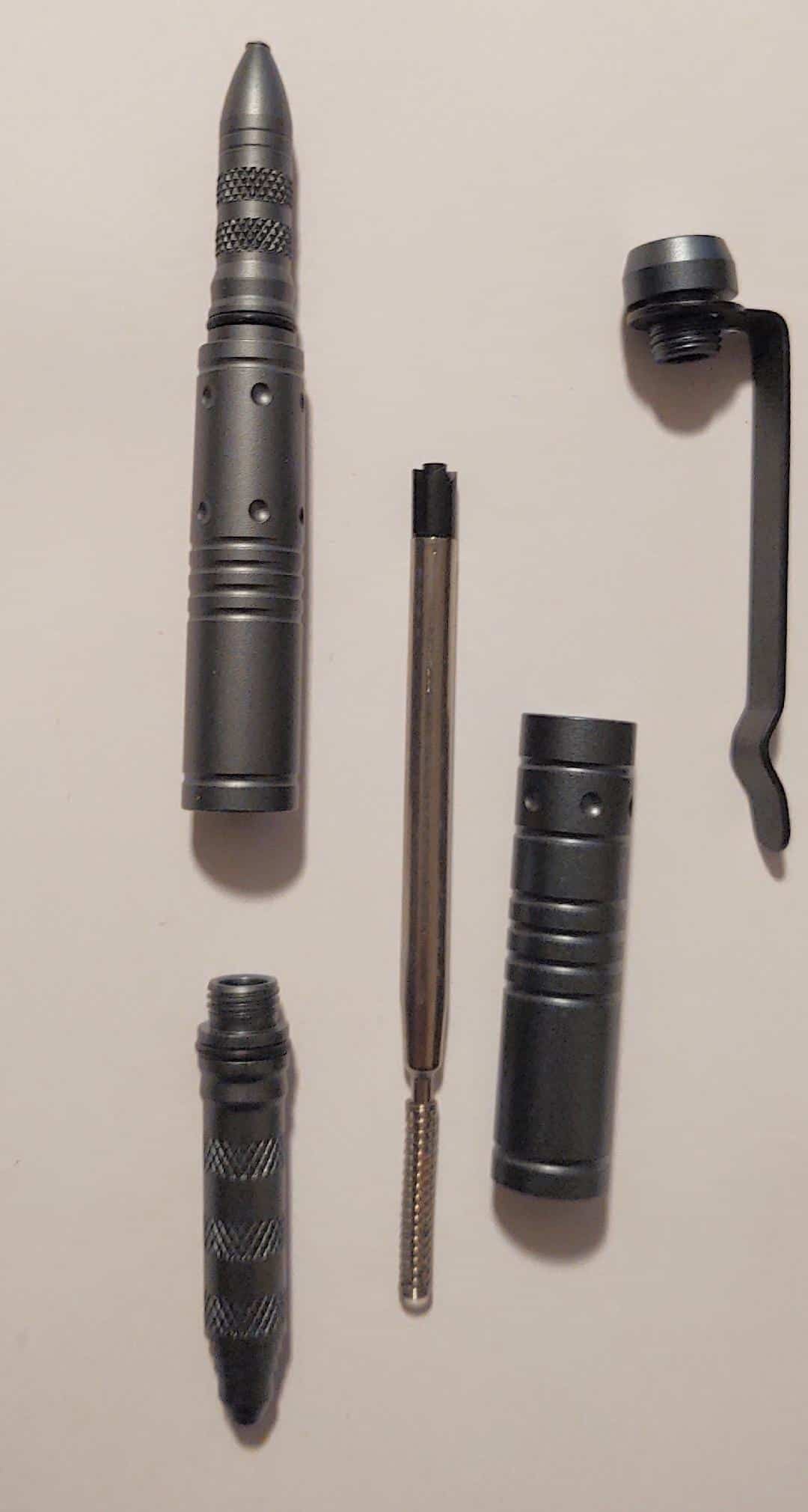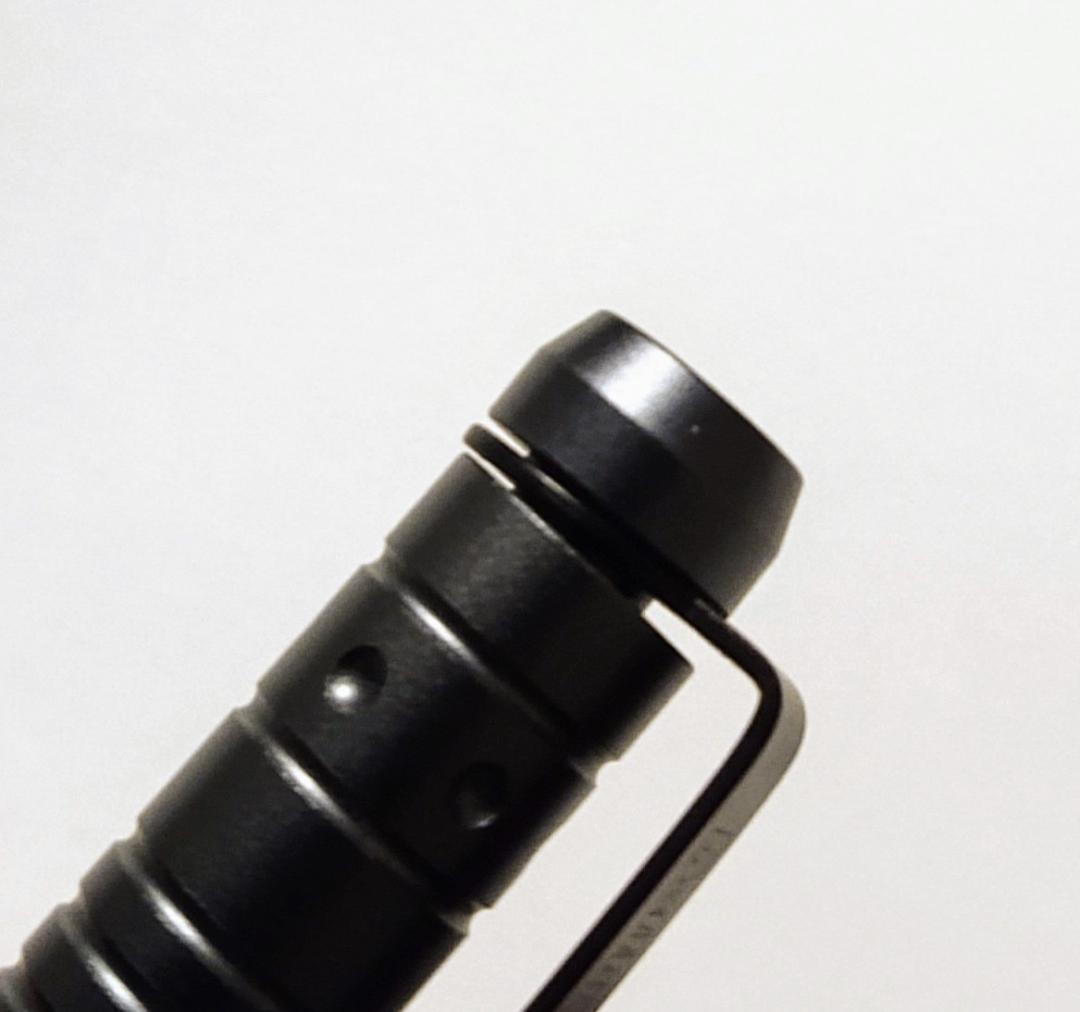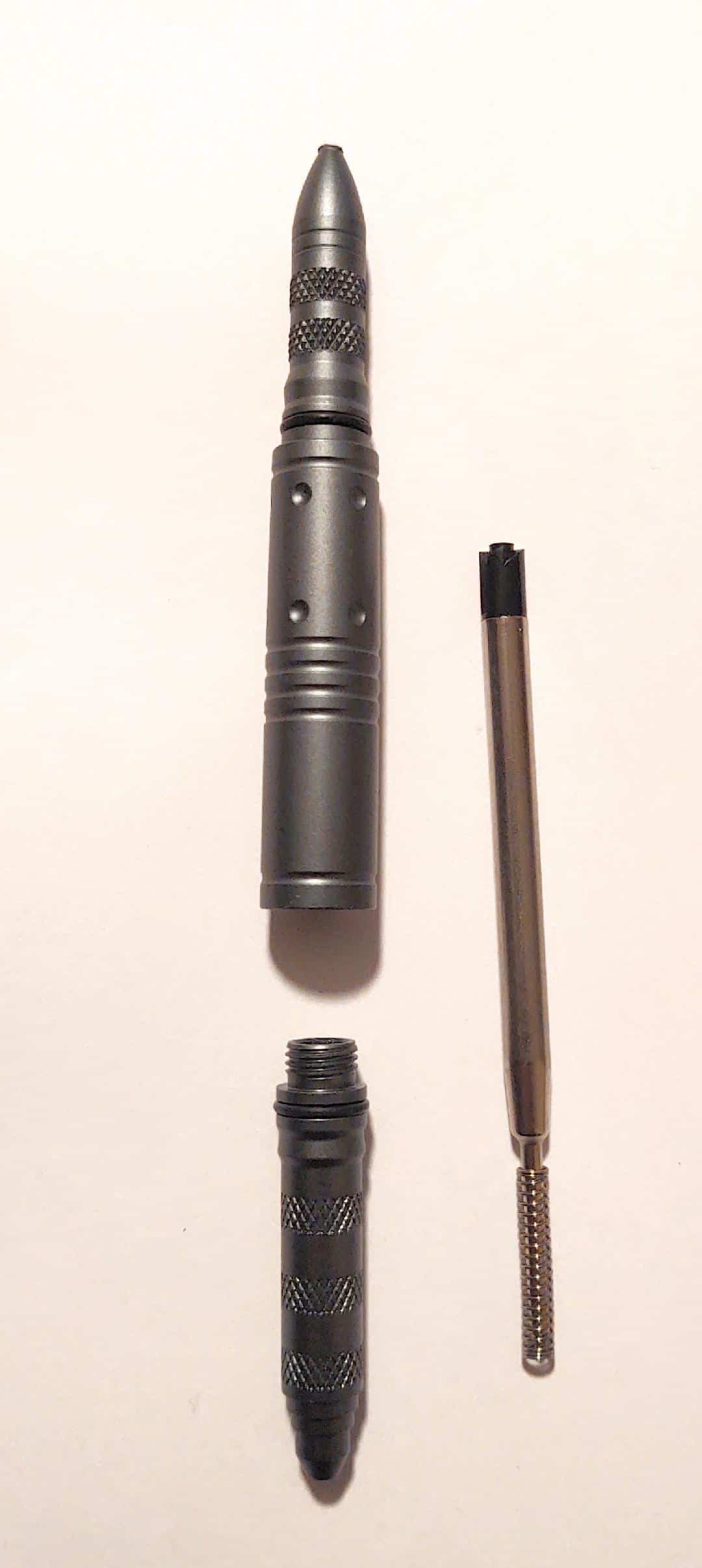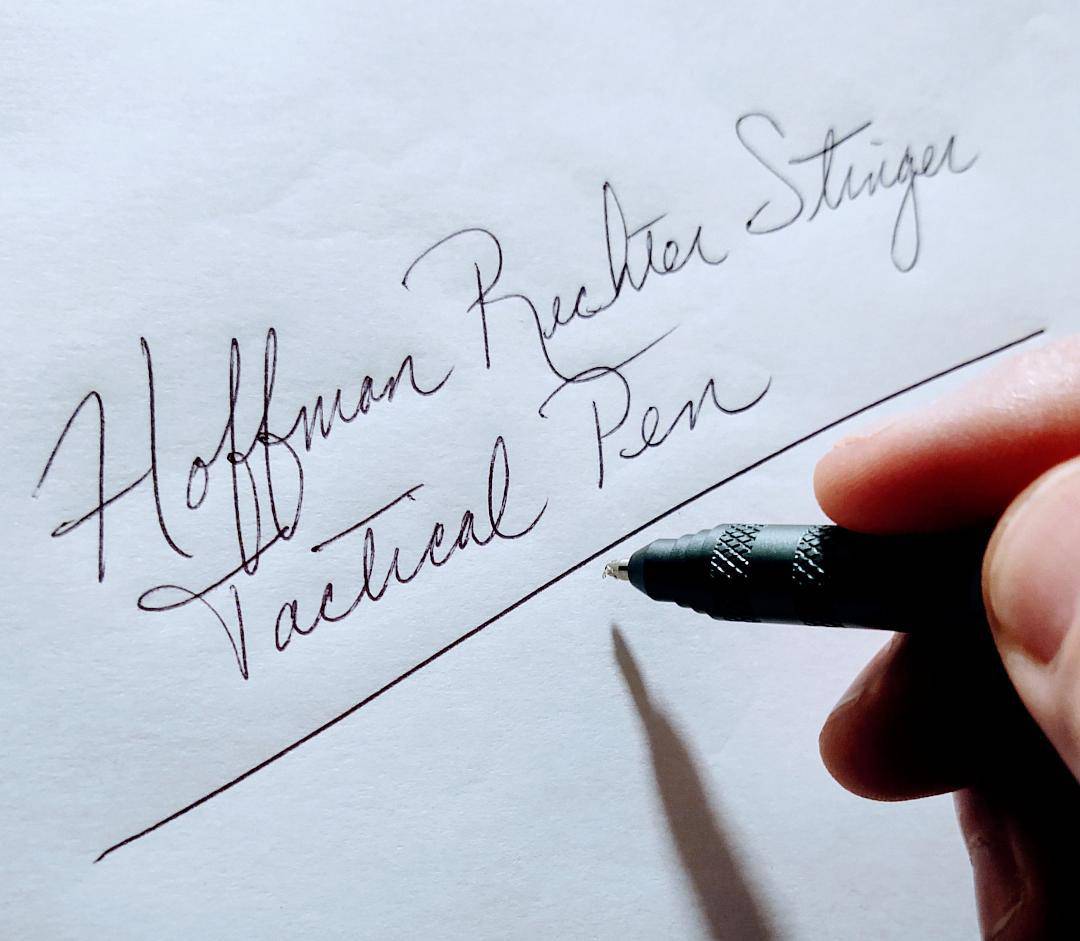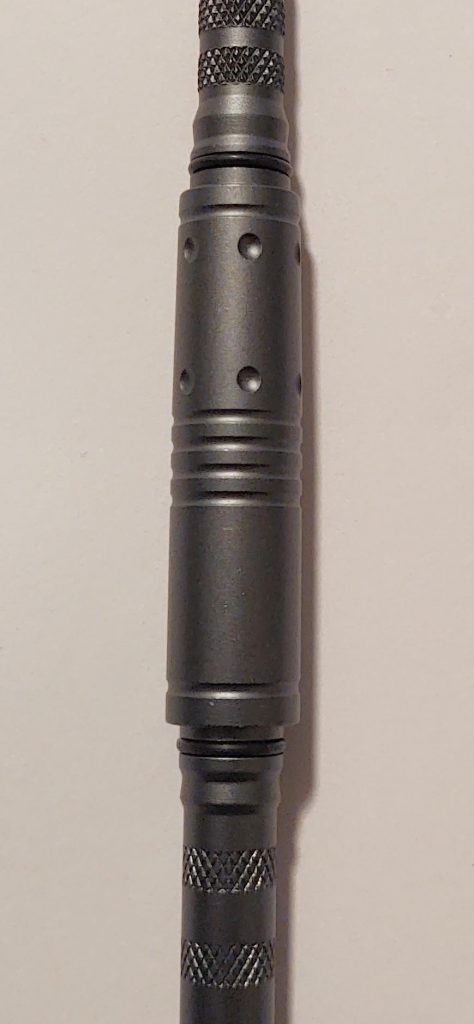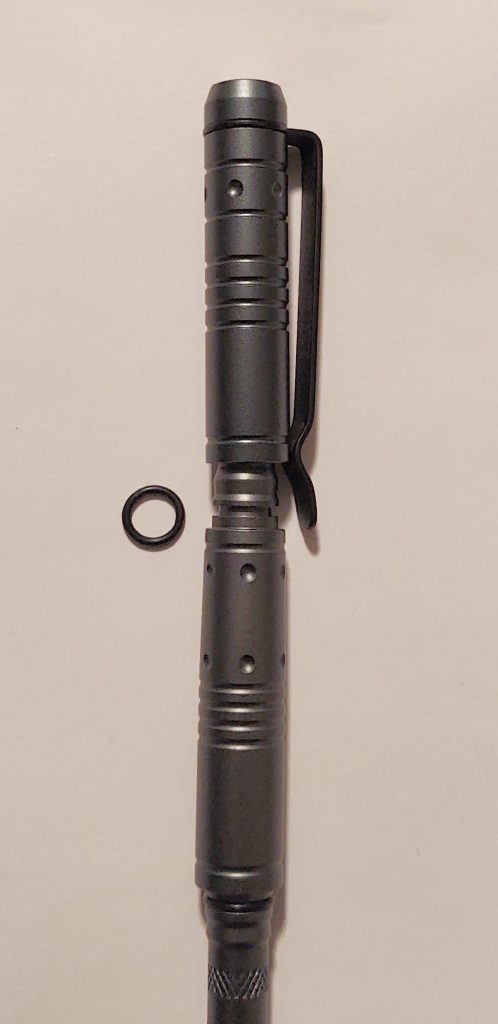EDC gear is a popular topic for those wanting to be prepared for the unknown.
Gear that people carry on their person can take all sorts of forms and in recent years there is one item that is often brought up. That item is a tactical pen.
Originally, a tactical pen was quite simple as they offered two main tools: a glass breaker and a writing pen.
Over the years some pens became more diverse and offered additional tools such as a knife, bottle opener, saw, flashlight, and a ferrocerium rod.
However, sometimes less is more.
That is why I was intrigued to test out the product featured in this article because it is a simpler tool.
In this article, I will be taking a close look at and testing the Hoffman Richter Stinger Tactical Pen. Let’s start by taking a look at what the Stinger has to offer.
SKIP AHEAD
Hoffman Richter Stinger Specifications
Material
The pen is made from aircraft-grade aluminum with a titanium coating.
Features
Hoffman Richter Stinger comes with two main tools. On one end is a glass breaker tip and on the opposite end is a ballpoint pen.
Carrying
Comes with a rugged pocket clip that can be used to attach the tactical pen to any strap or inside pocket.
Color
The pen is only available in black.
Country of Origin
The label on the box reads “Made in P.R.C.” P.R.C. stands for People’s Republic of China
First Impression of Hoffman Richter Stinger Pen
When I first took the Stinger out of the box it felt solid and well made. It was not too light or too heavy, but just right.
The round shape of the frame makes it ergonomic to hold like a pen for writing or as an impact tool. The textured surface of the metal also gives the tool a bit of grip no matter how it is being held.
Testing the Hoffman Richter Stinger Pen
Glass Breaker
I would like to start by saying I made a huge mistake in that I did not take a close-up photo of the tip of the glass breaker before testing, and I knew better. This will make more sense in a minute.
I did not have any large panes of window glass or vehicle windows that I could test the glass breaker out on. So, I had to make do with a glass jar I found laying around my workshop.
After putting on proper PPE I placed the jar into a cardboard box to help contain the broken glass.
With everything set up and ready to go, I raised my arm up and swiftly brought the pen down onto the jar.
I heard the pen contacting the jar but did not hear glass breaking. I repeated this, four more times, each time striking the jar harder. But the glass did not break, and the jar survived the test.
Before continuing I stopped and glanced at the end of the glass breaker tip. This is when I noticed that the tip had been completely flattened.
Before the test, the tip was rounded, not a sharp point, but a rounded tip. After five strikes against a glass jar, the tip was flattened and looked destroyed.
I then inspected the jar and found no cracks or chips. I thought maybe I had myself a super-strong jar made from indestructible glass.
After putting that notion aside, I grabbed a different tactical pen and tried it out on the jar. After one firm swing, the jar shattered into a lot of pieces.
Additionally, I found that even with a firm grip on the pen, there was a fair amount of movement in the snap cap which rests in the palm when using the glass breaker end.
This causes the pen to twist and turn upon impact. Because of this, there is potential for the cap to become separated from the rest of the pen during aggressive use.
Writing
As a writer, I spend a lot of my time typing away at a keyboard but my love of putting pen to paper has never diminished.
I only bring this up because a pen is an important tool for me. And seeing that it is one of two tools on the Stinger I would say it is a pretty important function to have.
The ink cartridge is in a fixed position, which means you do not click or twist the frame to use it.
To access the pen, simply remove the cap which snapes on and off.
Having a snap cap is a nice feature but what is even nicer is that the cap snaps onto the opposite end over the glass breaker tip.
I have used other tactical pens that use a similar cap, but those do not snap onto the opposite end. They merely sit loosely which is annoying when trying to write.
When I was writing with the Stinger pen, the cap sat secured to the other end and I did not have to worry about losing it.
Speaking of writing with the pen…
I think the pen writes quite well. It produces a bold black line that does not bleed into the paper, run, or smear. It creates smooth continuous lines, and the frame of the pen is comfortable in the hand while writing.
While the frame is a bit bulky as pens go, I could see myself doing a lot more writing with this other than signing my name on receipts.
O-ring
There are two small rubber O-rings on the Stinger. One on the pen end and one on the glass breaker end.
It appears that these are used to help hold the pen cap in place, whether that be while it is covering the pen or the glass breaker.
My first assumption was that the cap was held in place primarily by this O-ring, so I decided to do a quick repetition test to see how well the ring would hold up.
To do this, I removed and fully replaced the cap five hundred times to simulate usage over time. Afterward, I noticed that the cap was still being held on just as snugly as it had been at the beginning.
Next, I was curious how the cap would stay on if the O-ring failed. To simulate this, I took a pointy tool and removed one of the O-rings.
Surprisingly, the cap still snapped into place and felt secure even after the O-ring was removed.
Should an O-ring fail it could easily be replaced by visiting the local hardware store but seeing that the cap stays on without it, it is probably not something I would rush out to do.
Pocket Clip
On one end of the pen cap, there is a black pocket clip. I am a big fan of these clips because it allows a pen to be carried in a variety of ways.
The clip on the Stinger appears to be rugged and tough. It also has a good amount of tension in it which means once it is clipped onto a strap or in a pocket it should hold well.
However, I ran into two problems.
The first is that the clip is attached to the cap, which snaps onto the pen. The cap holds well and is not going to fall off the pen, which I tried by whipping the pen around.
But the cap does slide off easily when it is pulled away from the pen. This is nice for when you want to use the pen, but it is not nice for when you want to clip the pen to an outside strap or pocket.
Just a little bit of pressure in the wrong direction will cause the pen to separate from the cap and this could leave you with a cap and no pen.
Lastly, the very end of the cap has a small piece that screws into the cap and holds the pocket clip in place. I found that it does not take a lot of sideways pressure on the pocket clip to loosen up that small metal end cap.
In fact, after my glass breaking test, I took a picture to show how loose the end cap had become. It had almost completely unscrewed itself.
I am assuming the endcap is threaded so that the pocket clip can be removed for people who do not want it. However, I think it would have been better if this component had been permanently attached.
As much as I like pocket clips, my suggestion would be to remove the clip so that you do not have to worry as much about losing the pen.
Pros and Cons of The Stinger Tactical Pen
Pros
- The ballpoint pen writes smoothly
- Overall, the pen is ergonomic and is comfortable in the hand
- The pen cap end cap provides a nice flat surface for thumb placement when using the Stinger as an impact tool
- The snap cap works without the O-ring
- The Stinger can be carried discreetly
Cons
- Expensive
- Glass breaker failed to break glass
- Glass breaker was flattened and destroyed after minimum use
- The pen cap may come off too easily
- The end cap on the pen cap unscrews easily
Open Questions Regarding Hoffman Richter Stinger
Q: What kind of cartridge refills does the pen take?
A: I removed the cartridge and after close inspection, I did not find any markings on it. However, I was able to find a six-pack of refills that work with several tactical pens, including the Hoffman Richter Stinger. They can be found here on Amazon.
Verdict
I was surprised at how much I liked using the Stinger to write considering that the pen is made by a company that produces gear and tools and not pens.
It was comfortable to hold and wrote smoothly. I give the ballpoint function a thumbs up.
I was equally surprised by the failure of the glass breaker tip. I have used glass breakers in the past that were not as effective as they could have been, but they still worked with minimum damage to the tool.
Unfortunately, that was not the case with the Stinger as the glass jar remained intact after testing while leaving the glass breaking tip flattened and destroyed.
In my opinion, this tool is rather expensive for what it is, especially with the problems I ran into during testing.
As a writing utensil and a tool to be used on soft targets, the Stinger would work fine. But if you require an effective glass breaker I would recommend searching elsewhere.
Thanks for reading and stay prepared!
What are your thoughts on tactical pens? Sound off in the comment section below and let us know!


